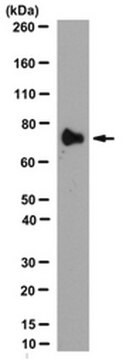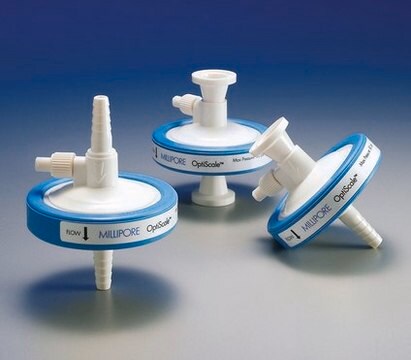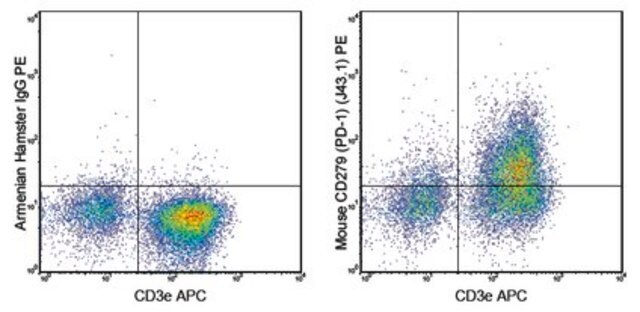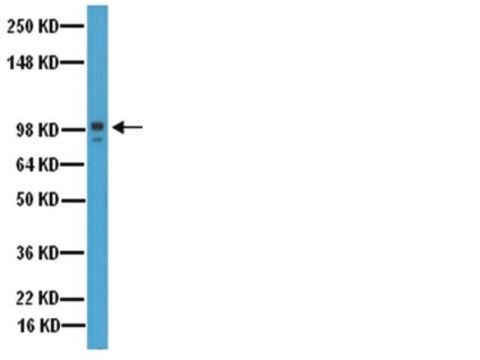MABS1281
Anti-Itk Antibody, clone 2F12
clone 2F12, from mouse
Synonym(s):
Tyrosine-protein kinase ITK/TSK, IL-2-inducible T-cell kinase, Interleukin-2-inducible T-cell kinase, Kinase EMT, T-cell-specific kinase, Tyrosine-protein kinase Lyk
About This Item
Recommended Products
biological source
mouse
Quality Level
antibody form
purified immunoglobulin
antibody product type
primary antibodies
clone
2F12, monoclonal
species reactivity
human
species reactivity (predicted by homology)
mouse (based on 100% sequence homology), rat (based on 100% sequence homology)
technique(s)
immunoprecipitation (IP): suitable
western blot: suitable
isotype
IgG1κ
NCBI accession no.
UniProt accession no.
shipped in
ambient
target post-translational modification
unmodified
Gene Information
human ... ITK(3702)
General description
Specificity
Immunogen
Application
Signaling
Immunoprecipitation Analysis: A representative lot immunoprecipitated Itk from both parental and Lck-negative (J.CaM1) Jurkat cells. Itk immunoprecipitated from the parental Jurkat cells was found with increased tyrosine phosphorylation following TCR cross-linking or pervanadate treatment, while only very weak tyrosine phosphorylation was seen with Itk from J.CaM1 upon prolonged pervanadate treatment (Heyeck, S.D., et al. (1997). J. Biol. Chem. 272(40):25401-25408).
Immunoprecipitation Analysis: A representative lot immunoprecipitated tyrosine-phosphorylated Itk from Jurkat cells stimulated by cross-linking of endogenous cell surface CD3 or transfected CD8 extracellular domain/CD28 cytoplasmic domain chimera (Heyeck, S.D., et al. (1997). J. Biol. Chem. 272(40):25401-25408).
Western Blotting Analysis: A representative lot detected baculovirus expressed Itk from infected Sf9 insect cells following ltk immunoprecipitation by the same antibody. The overexpressed ltk was found autophosphorylated on tyrosine when expressed alone in Sf9 and increased ltk tyrosine phosphorylation was seen when co-expressed with Lck (Heyeck, S.D., et al. (1997). J. Biol. Chem. 272(40):25401-25408).
Quality
Western Blotting Analysis: A 1:1,000 dilution of this antibody detected Itk in 10 µg of Jurkat cell lysate.
Target description
Physical form
Storage and Stability
Other Notes
Disclaimer
Not finding the right product?
Try our Product Selector Tool.
Storage Class Code
12 - Non Combustible Liquids
WGK
WGK 1
Flash Point(F)
Not applicable
Flash Point(C)
Not applicable
Regulatory Listings
Regulatory Listings are mainly provided for chemical products. Only limited information can be provided here for non-chemical products. No entry means none of the components are listed. It is the user’s obligation to ensure the safe and legal use of the product.
JAN Code
MABS1281:
Certificates of Analysis (COA)
Search for Certificates of Analysis (COA) by entering the products Lot/Batch Number. Lot and Batch Numbers can be found on a product’s label following the words ‘Lot’ or ‘Batch’.
Already Own This Product?
Find documentation for the products that you have recently purchased in the Document Library.
Our team of scientists has experience in all areas of research including Life Science, Material Science, Chemical Synthesis, Chromatography, Analytical and many others.
Contact Technical Service






